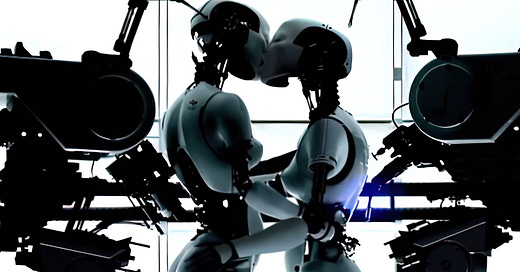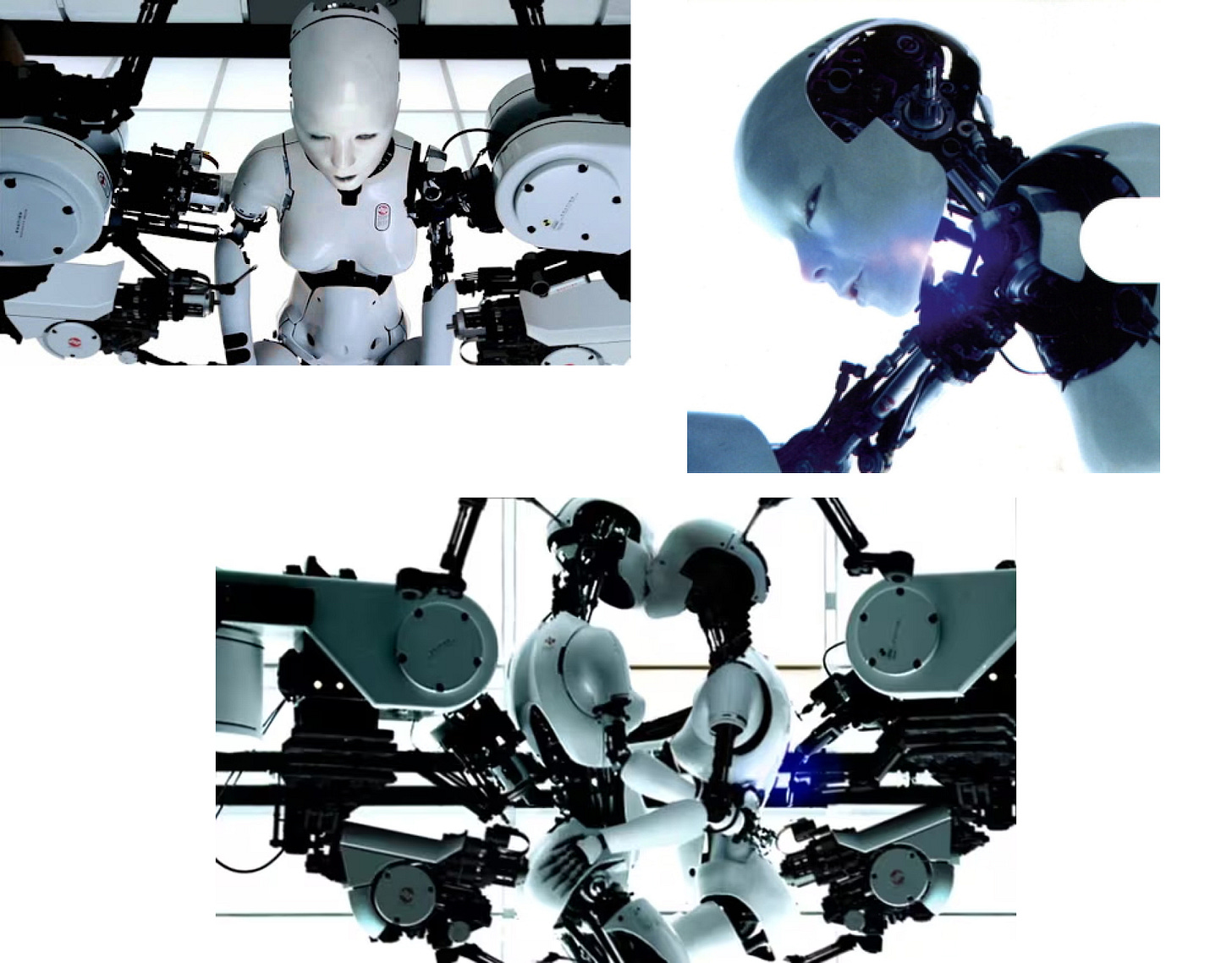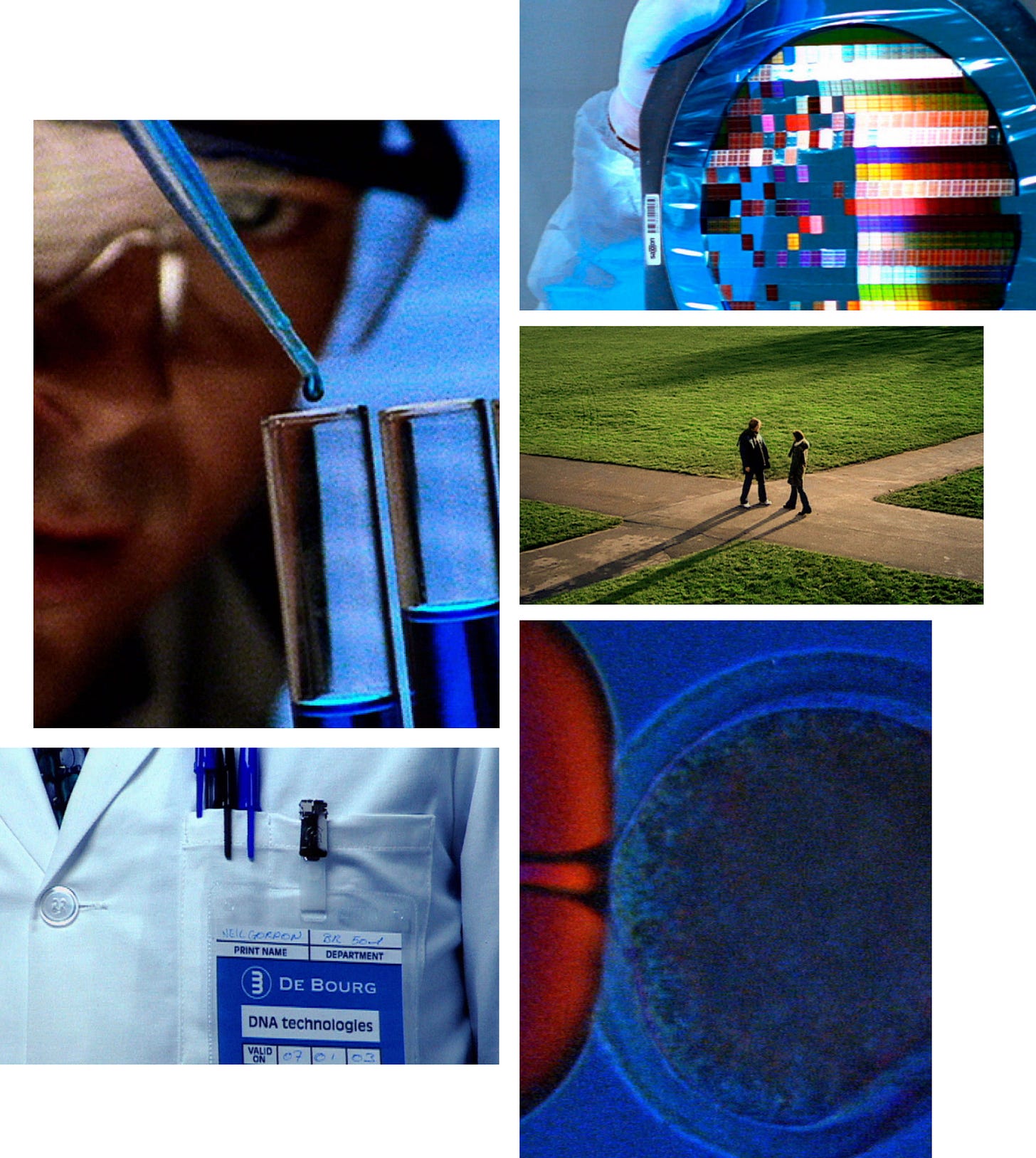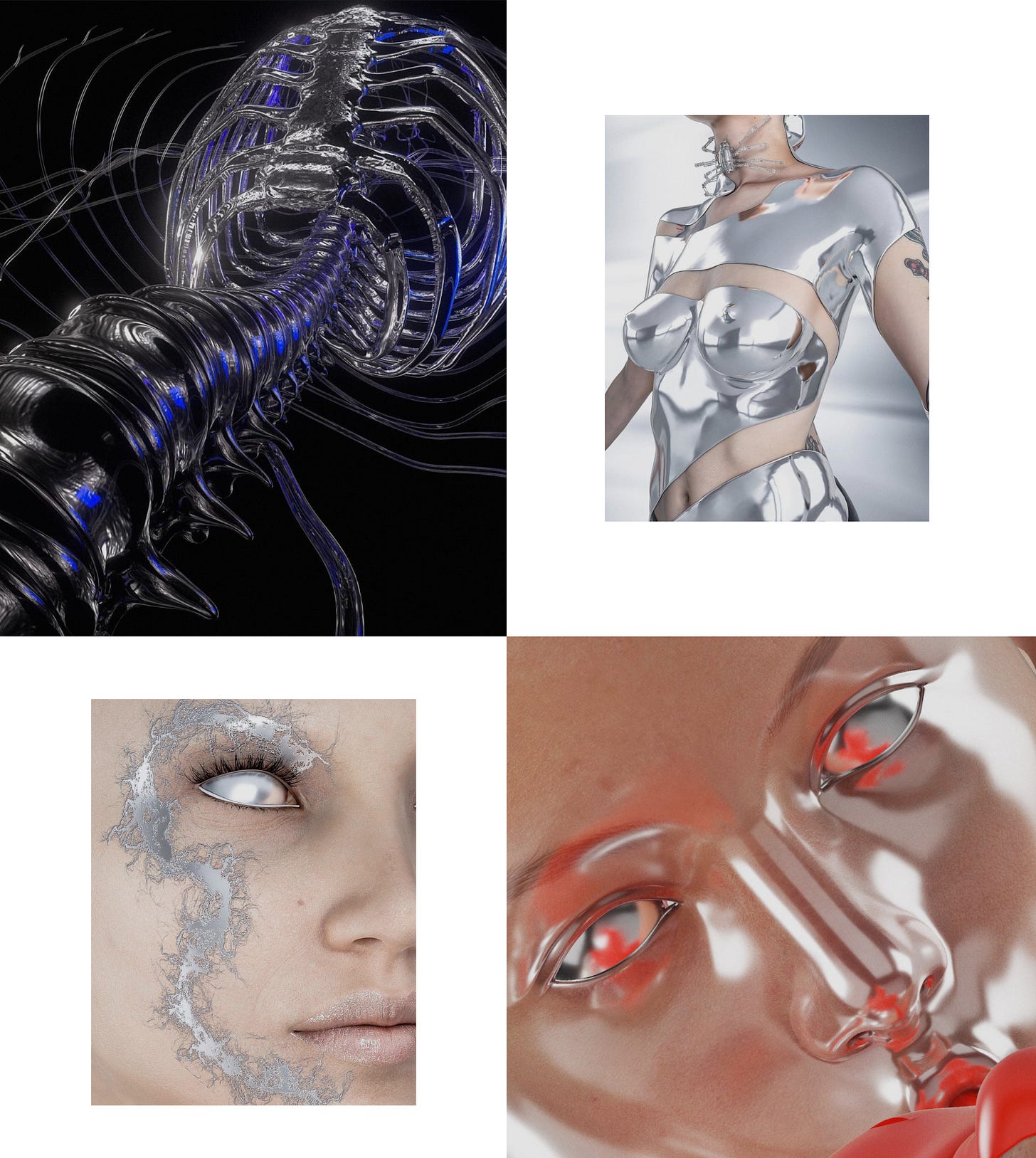Revisiting the Y2K technological aesthetic
And our relationship with technology and the future
Nearly twenty-five years ago, humanity stood at the brink of a new era. The internet was vast, uncharted territory, technology felt fresh, and the world looked toward the future with both hope and trepidation.
As the year 2000 approached, we imagined both an impending apocalypse and the promise of a new beginning. Although climate change and geopolitical instability were recognized as emerging threats, they seemed far-off issues for another generation, perhaps another millennium.
Fast forward to today, and the inevitable trend cycle has brought Y2K back: sleek, space-age styles, cautious admiration of technology, fragile optimism, and an underlying existential dread. There's once again a subtle sense of apocalypse in the air, a feeling of teetering on the edge of profound change.
And with it, all-over denim and metallic looks have made their return to the fashion scene, along with the cultural attitude that shaped the era.
Scientific nostalgia
One of the Y2K sub-aesthetics making a notable comeback is "lab-core", an aesthetic defined by the imagery of chaotic laboratories, futuristic ambitions, and scientific nostalgia.
Lab-core evokes a vision of a high-tech utopia—one that feels both alluring and unnerving.
The aesthetic draws from early 2000s cultural artifacts, like Björk’s "All Is Full of Love," directed by Chris Cunningham. The music video depicts robotic versions of Björk coming to life and embracing in a sterile, white environment. It combines cold, clinical technology with deep human emotions, portraying an intimate connection between machines.
This juxtaposition of love with machinery captures the spirit of the Y2K era, an age when humanity's fascination with the technological future was paired with apprehension about losing our sense of self.
Here’s a cool article about how Björk has influenced the Y2K robotic aesthetic
On the other hand, Massive Attack’s “Special Cases,” directed by H5, presents a more dystopian vision of the early 2000s. The video centers on two genetically engineered children, products of rival biotech companies, raised as perfect specimens in a controlled environment.
By depicting these children as "products" subject to corporate interests, the video exposes the vulnerability of human existence in the face of unchecked technological control.
It touches on the fear that our lives may be reduced to a commodified, manipulated narrative, a fear that felt urgent then and still resonates today.
From science to fashion nostalgia
The current revival of Y2K aesthetics is not merely about fashion or nostalgia; it’s about re-examining our relationship with technology in an era of new uncertainties.
As we grapple with global pandemics, the climate crisis, and the implications of digital technologies like NFTs and the metaverse, we find ourselves at a similar crossroads. The lab-core aesthetic has evolved, what was once a vision of sterile, futuristic labs has now morphed into a desire for more balance.
Today, this aesthetic blends the cold, metallic, high-tech look of Y2K with more organic and natural elements. It's a reflection of our hope to find harmony between the natural world and the technological advances that have become so integral to our lives.
Mark Fisher coined the term "hauntology" to describe how we are often haunted by futures that never came to be, futures that linger in the background, waiting for us to revisit them.
The Y2K aesthetic is one such ghost, representing a vision of the future that was both hopeful and ominous.
By revisiting this aesthetic, we are not just indulging in nostalgia but are also re-engaging with those early hopes and fears, examining how they fit into today’s context.
What has emerged is a desire to humanize our relationship with technology. If the Y2K era was about sleek, closed-off, spaceship-like environments, today’s approach is about integration.
A new wave of digital artists like Giusy Amoroso is trying to bring this aesthetic to the max.
We no longer see technology as separate from the natural world; instead, we seek ways for these elements to coexist. The lab-core aesthetic reflects this vision, with fashion blending metallic and fluid materials that suggest both technological advancement and organic fluidity.
It’s a reminder that the future is still being written and that, in the midst of uncertainty, we continue to search for beauty and balance in the convergence of humanity, nature, and technology.
Fisher, Mark. Ghosts of My Life: Writings on Depression, Hauntology and Lost Futures. Zer0 Books, 2014.
Haraway, Donna. A Cyborg Manifesto: Science, Technology, and Socialist-Feminism in the Late Twentieth Century. Routledge, 1991.
Björk, "All Is Full of Love," directed by Chris Cunningham. One Little Indian, 1999.
Massive Attack, "Special Cases," directed by H5, featuring Sinéad O'Connor. Virgin Records, 2003.
Ouch! is meant to be collaborative, free, and independent from any trend, so I’d like to hear from you about potential topics of discussion.
Feel free to drop a DM to @lux.aeon on Instagram with any suggestion regarding art, design, or something that triggered your mind and deserves attention, or leave a comment here.
Stay hydrated, see you soon 🦖









